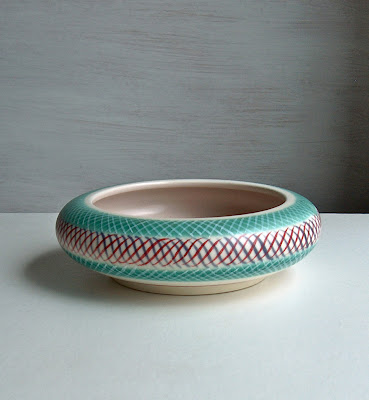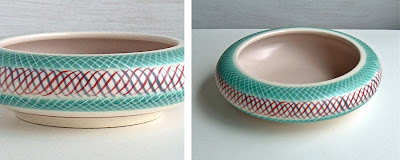How about a burst of colour to kick off the new year? And these three small glass vases certainly give us that.
These smart, chunky vases are by Whitefriars and all date from the early 1970s. Not only do the vases have the intensity of that wonderful deep orange colour, they also have such nice surface textures. The square vase has a raised spiral decoration, known as Greek Key, the bulb-shaped vase (known as the Onion vase, I think) is covered in large impressed blobs, and the taller vase has a lovely tactile 'tree bark' surface. The orange colour is known as Tangerine by Whitefriars collectors – and, not surprisingly, there are quite a few of those. There's an excellent collectors site with lots of information on Whitefriars glass, here:
Whitefriars collectors site
I can see why Whitefriars glass is as popular as it is. If these three small vases look so good displayed together, you can imagine what impact a couple of large pieces would have.
P.S. If, because of my title, you accidentally arrived here expecting to find something on Tangerine Dream, the mighty fine German electronic music group, my apologies. You could try here:
Tangerine Dream official website











